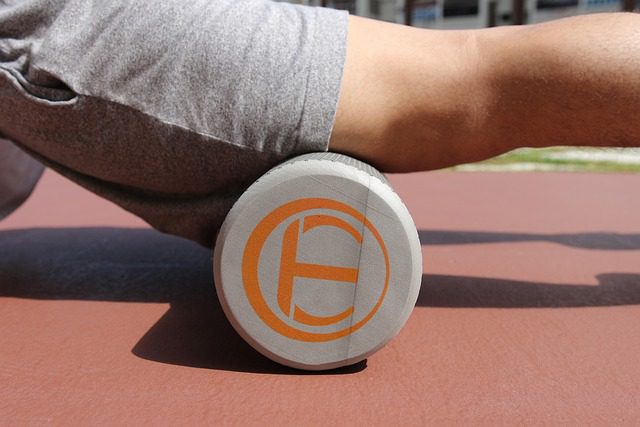6 Ways to Effectively Speed Up and Improve Muscle Recovery
If you exercise with any type of intensity, you’re all too familiar with muscle soreness. It doesn’t matter if you’re training like a bodybuilder or training for a marathon, muscle soreness is a real concern and can be a limiting factor when it comes to how hard you can push yourself and your body in the gym during the following days and subsequent workouts. For that reason, your focus should be to improve muscle recovery.
While many people will sit around and wait a few days until they feel like their muscles are recovered due to the soreness subsiding, you can do a few things to improve muscle recovery and speed up the process.
Below, you will find six ways to effectively speed up and improve muscle recovery so you can get back in the gym and train with the same intensity you gave during your previous workout. In addition, these techniques can also help you build more muscle in the long run by taking an active role in providing your muscles with what they need to rebuild and repair torn-down muscle fibers.

Let’s jump into it!
Disclaimer: This article is for informational purposes only and is not meant to treat or diagnose any condition. It is recommended that you speak with your doctor before starting any exercise program, changing your daily nutrition, or adding any supplements to your regimen.
Table of contents
How Can You Speed Up and Improve Muscle Recovery?
If you want to effectively speed up and improve muscle recovery, try the methods found below:
1. Get Adequate Rest
If you want to improve muscle recovery, you need to focus on getting enough quality sleep each night. All the work you put in at the gym will do you no good if you aren’t allowing your body the ability to rest and properly recover. While many people live a hectic lifestyle where they stay up all night doing work and burning the midnight oil, all they’ll find is that their muscle recovery suffers, and it can take much longer until their muscles are no longer sore from workouts.
Your goal should be to get a minimum of seven hours of sleep each night. Getting a good night’s sleep is vital for muscle recovery as it allows your body the ability to release hormones, minimize the stress put on the body, and repair damage done to the body.
Those who do not get enough sleep may find their muscle growth stalls, their recovery period is extended, their immune system isn’t functioning optimally, they put on weight and body fat due to a rise in cortisol, their energy tends to suffer the next day, and the body as a whole (such as the organs) become taxed.

The best thing about sleep when it comes to the ability to improve muscle recovery is that it’s free. If you are worried about or concerned about your sleep quality and patterns, there are apps you can download to your phone as well as wearable devices you can purchase that will track and monitor your sleep. This may be a good investment if you know you have problems sleeping.
2. Schedule a Massage
A massage is a great way to improve muscle recovery as well as being a time to relax (both your mind and body). Those who regularly schedule massages can drastically lower inflammation in their body, increase mitochondria activity, reduce the tension on muscle fascia, and flush the toxins and waste out of the muscles. In addition, getting a massage can work on breaking up scar tissue, improve blood flow, reduce muscle pain, increase flexibility, and loosen up any knots or tightness in the muscles themselves to improve movement and flexibility.
Related Article: What Types of Massages Should You Be Getting?
While a massage can be an expensive form of muscle recovery, it’s absolutely effective. If you are unable to justify the cost, consider purchasing something like a massage gun. While prices vary, you can pick up a high-quality massage gun for around $100 to $150. If that’s still not in your budget, ask your spouse or significant other if they can massage your sore muscles to help you improve muscle recovery.
3. Utilize a Foam Roller
Another great tool you can utilize that won’t break the bank is a foam roller. You can generally find foam rollers for around $20 online. These massage tools are great to improve muscle recovery as they are effective at reducing muscle soreness, tightness, and can break up any knots you may be suffering from.

Similar to a massage, a foam roller can also help break down scar tissue, increase your range of motion, loosen any tight fascia, improve flexibility, and improve blood flow to the area you are working.
Related Article: Are You Foam Rolling Your Lower Back? STOP!
The ability to foam roll in the privacy of your home makes this a fantastic tool to improve muscle recovery. You can roll out in the morning if you wake up with muscle tightness, you can roll out at night to relieve sore muscles and tightness, you can use it following your workouts, and you can even take a smaller foam roller with you to the office and roll out periodically throughout the day so long as it does not interfere with your job. The better you feel, the more productive you’re going to be.
With the improvement in blood flow, your body can more effectively push key nutrients out to the muscles so that they can further help improve muscle recovery and help repair those torn-down muscle fibers.
4. Stretch Out Your Muscles
Tight muscles cannot fully activate, which can lead to a shorter range of motion during exercise and could even increase your risk of injury. Following your workouts, make it a priority to stretch out to improve muscle recovery as well as increase your flexibility and range of motion.
Related Article: Can Stretching Really Improve Your Muscle Growth?
Those who do not stretch may find they are lacking in the flexibility department. This can drastically alter their quality of life. For instance, if your hamstrings are always tight, it can cause your hips to shift slightly, which may cause you to feel some lower back pain. Lower back pain can hinder your workouts and not allow you to train intensely, as well as change your daily activities due to your reduced range of motion (think in terms of bending over to get dressed or putting your socks and shoes on). Your muscles tend to work as small units where one affects the other, and when there are imbalances or tightness, it can cause issues.
5. Drink More Water
This should come as no surprise, but since your body is made up primarily of water, you should focus on your daily water intake to improve muscle recovery. Staying hydrated helps keep adequate amounts of water in your muscles and cells. When adequate amounts are not present, and you become slightly dehydrated, you run the risk of health issues as well as suffering from a muscle pull or even a tear since your muscles lose some of their elasticity.

Hydration is also essential for digestion, and when you aren’t able to properly digest your food, that means you won’t break down, absorb, and transport critical nutrients out to the muscles to improve muscle recovery as effectively. While water intake can vary depending on your activity level and active lifestyle, most should strive to consume around a gallon of water a day. Those who are active should drink even more to replenish what was lost through sweat.
A tip that you may find helpful is to carry a water bottle with you wherever you go. Sip from it throughout the day, and when empty, simply refill it or grab another water bottle.
6. Supplement Smarter
The last thing to mention in this article is the fact that supplements are a great way to help improve muscle recovery. Two supplements, in particular, are worth noting — protein powder and amino acids.
Protein powder is incredibly beneficial following workouts as it can help kickstart the recovery process by being broken down into amino acids, which help rebuild the muscle fibers you just tore during your workout. Taking in enough protein from your diet can also help you add quality lean muscle mass to your frame. Post-workout, taking in a fast-digesting protein source such as a whey protein isolate or even a whey protein concentrate will be ideal if you prefer a more budget-friendly powder. A quick-digesting protein, like the examples provided, will hit the system extremely quickly, unlike a slow-digesting protein like a casein or even a whole food meal, which would need to be completely digested and broken down in order to shuttle those nutrients out into the blood.
Related Article: Electrical Muscle Stimulation — Does EMS Increase Muscle Growth?
When it comes to amino acids, a selling point is that you can utilize them whenever you want. You can have them as part of your pre-, intra-, or even post-workout supplement regimen. Even better, you can mix them up and sip them throughout the day to help you stay anabolic and improve muscle recovery. The constant influx and availability of amino acids can help provide your muscles with the building blocks needed to come back bigger and stronger.
However, a key thing to remember is that supplements are just that — a supplement. Can they be used to help improve muscle recovery? Yes. But do not use such products as a replacement for real food. Use them to fill in any nutritional gaps you may have (whether that be macronutrients or micronutrients).


*Disclosure: This article may contain affiliate links or ads, which means we earn a small commission at no extra cost to you if you make a purchase through these links. These commissions help support the operation and maintenance of our website, allowing us to continue producing free valuable content. Your support is genuinely appreciated, whether you choose to use our links or not. Thank you for being a part of our community and enjoying our content.
PLEASE CONSIDER SHARING THIS ON YOUR SOCIAL MEDIA TO HELP OTHERS LEARN MORE ABOUT THIS TOPIC.





